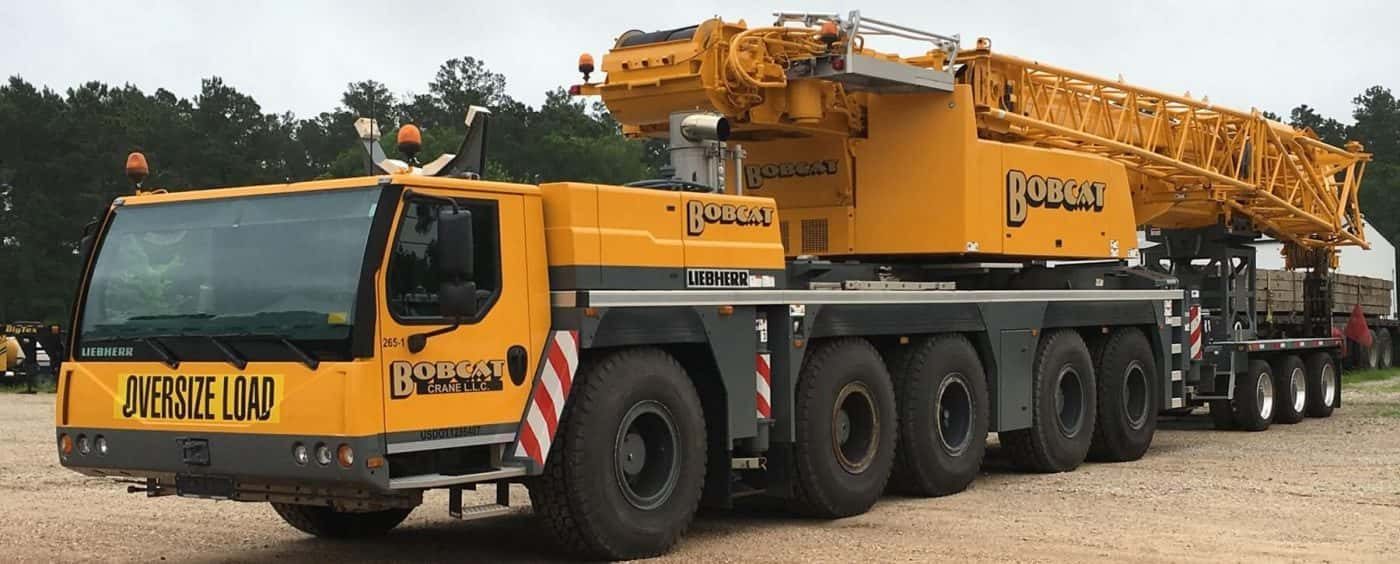
Prevent Worksite Accidents with These Crane Safety Tips
Construction sites are inherently dangerous places, and the use of cranes can make them even more so. Cranes are powerful machines that can cause serious injury or even death if they are not used properly. It is essential that safety precautions are taken when operating a crane to ensure the safety of workers and anyone else in the vicinity. This article will provide some crane safety tips from Bobcat Contracting, one of the leading crane companies in Houston, to help prevent accidents and injuries on the worksite.
Thoroughly Read All of the Operators Manuals
Do not move forward without reading through each and every operator manual there is. There should be a manual for several different things:
Controls
Check what the manuals say for optimal control settings and settings to avoid.
Safety Mechanism
Learn how each safety mechanism works and how to engage and disengage them.
Capacities
Understand the load capacity of the crane and what it can and cannot lift.
Only Hire Qualified Operators
Ensure that all crane operators are experienced and certified by a recognized institution. This will help to reduce the risk of injury due to operator error. Operators should be licensed to operate the crane in question and should have a good understanding of its capabilities and limitations.
Choosing the Perfect Crane for Your Project
Choose the right crane for your project. Consider the terrain and the type of load you need to lift. Different types of cranes are better suited for different kinds of work. Here are some of the most common types of cranes:
Crawler: This is the perfect crane for jobs where the terrain is uneven or muddy.
Rough-terrain: This is best for lifting heavier loads on uneven or hilly terrain.
All-terrain: This is the most versatile type of crane, as it can be used on different types of terrain.
Carry deck: This is best for lifting lighter loads in limited spaces.
Stabilize the Crane Before Rigging It
Ensure that the crane is properly stabilized before rigging it. This will help to reduce the risk of the crane tipping over in the event of an unexpected load or movement.
Keep the Crane Clear of Obstacles When Moving
Keep the crane clear of obstacles when moving it, to ensure that no one is injured by the load or crane itself.
Keep Load Radius in Mind
Make sure to keep the load radius in mind at all times. The load radius is the distance between the crane and the load. If the load radius is too large, the crane may be unstable and could tip over.
Rigging Your Load
Check the rigging before lifting. Ensure that the slings and rigging are properly attached to the load. The type of sling and hitch used should be appropriate for the size and weight of the load.
Sling Angle
Choose the right sling angle. The sling angle should be between 70-90 degrees for optimal safety.
Hitching
Make sure the hitch is secure and not likely to slip loose.
Communicate Clearly at All Times
Communicate clearly to everyone in the vicinity. Make sure that everyone understands and follows the instructions given by the operator.
Load Capacities
Always be aware of the load capacity of the crane and never exceed it.
Rotation
Be aware of the crane’s rotation limits. Do not rotate the crane if it is not meant to do so.
The Load Radius Factor
Be aware of the load radius. It is important to keep the load radius in mind at all times to ensure the safety of the crane and those around it. As the load radius increases, the risk of the crane tipping over increases.
Outriggers vs. Only Tires
When operating the crane, ensure that the outriggers are fully extended and properly stabilized. If the outriggers cannot be used, ensure that the tires are properly inflated and that the crane is leveled.
Typically, using outriggers can increase stability and reduce the risk of tipping.
Go Through Operator Checks Every Day
Before starting any crane operation, operators should go through a pre-start checklist. This checklist should include checking the crane’s safety system, engine starting, and any other checks required by the manufacturer.
Safety System
Check the safety system before beginning operation. Make sure that all safety mechanisms are properly engaged.
Pre-Start
Check that the load and rigging are properly secured before starting the crane.
Engine Start-Up
Check the engine start-up procedure before starting the engine. This includes checking the oil, fuel, and coolant levels, as well as checking the air filter and spark plugs.
By following these crane safety tips from Bobcat Contracting, you can ensure a safe and successful crane operation. Remember, safety is paramount when operating a crane, and any negligence could lead to serious injury or death.
Get in Touch with Bobcat Contracting, One of the Leading Crane Companies in Houston
The best way to stay safe at a worksite is to have qualified operators and the right crane for the job, and have the perfect crane for your project. At Bobcat Contracting, our crane company in Houston has a wide selection of quality cranes for rent. Contact us today to learn more about our crane rental and services.
